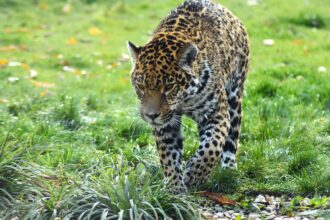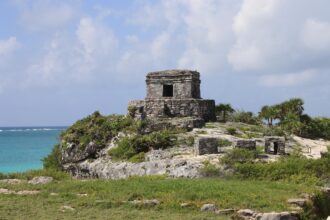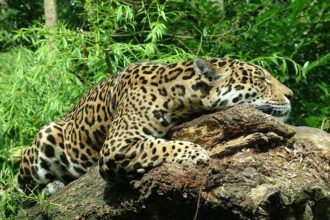Tulum’s Initiatives for Big Cat Conservation: A Global Challenge
The Importance of Big Cats in Ecosystems
Big cats, including jaguars, tigers, leopards, and lions, are apex predators that play a crucial role in maintaining the balance of their ecosystems. In regions like Tulum, Mexico, these majestic creatures contribute to biodiversity and help regulate prey populations. However, due to habitat loss, poaching, and climate change, big cats face considerable threats globally. Protecting these species is essential not only for ecological balance but also for the economic sustainability of tourist destinations relying on wildlife.
The Role of Tulum in Big Cat Conservation
Tulum has emerged as a significant player in wildlife conservation efforts, particularly for big cat species like the Jaguar, which is native to the area. The Riviera Maya, where Tulum is located, is part of the Mesoamerican Biological Corridor, a critical habitat that supports diverse wildlife. Tulum’s initiatives are multi-faceted, aimed at preserving not just the jaguar, but the entire ecosystem that supports these iconic animals.
Collaborative Conservation Efforts
Partnerships with NGOs
Tulum’s conservation initiatives often stem from collaborative efforts between local governments, non-governmental organizations (NGOs), and the surrounding communities. NGOs like the Mexican Institute of Protection and Conservation work alongside the Jaguar Conservation Fund to create and implement programs that directly address the needs of big cats in the region. These partnerships are vital in obtaining the necessary resources and expertise to ensure effective wildlife management.
Community Engagement and Education
Engaging the local population is crucial for the sustainability of conservation projects. Tulum residents are educated about the importance of big cats and their roles in maintaining healthy ecosystems. This is achieved through workshops, educational campaigns in schools, and community-driven projects. Conservation education fosters a sense of responsibility, encouraging locals to become stewards of their natural surroundings.
Habitat Protection and Restoration
Protected Areas
One of Tulum’s primary strategies is the establishment of protected areas, such as the Sian Ka’an Biosphere Reserve, which provides a sanctuary for a variety of species, including big cats. This reserve encompasses diverse ecosystems, from wetlands to tropical forests, enabling crucial migration pathways for wildlife. By regulating human activities within these regions, Tulum ensures the habitat remains intact and suitable for big cat populations.
Reforestation Efforts
To combat habitat loss, Tulum has initiated reforestation projects aimed at restoring native plant species in degraded areas. Reforestation not only aids in providing shelter and food for big cats but also contributes to overall ecosystem resilience. Local schools often participate in these efforts, planting trees and learning firsthand about the significance of their local environment.
Wildlife Monitoring and Research
Technology in Conservation
Modern technology is playing an increasingly pivotal role in wildlife conservation. Tulum has embraced the use of camera traps and GPS tracking systems to monitor big cat populations. This innovative approach helps conservationists gather valuable data on the behavior, movement, and health of these animals, enabling more informed decision-making regarding their protection.
Scientific Research
Collaborative research projects with universities and wildlife biologists are essential to understanding the needs of big cats. Studies on prey availability, habitat use, and population dynamics provide insights that drive effective conservation strategies. Tulum serves as a vital research hub for these efforts, contributing to the larger body of knowledge necessary for big cat preservation.
Addressing Human-Wildlife Conflict
Mitigation Strategies
Human-wildlife conflict poses a significant threat to big cats as they often encroach on human settlements in search of prey. Tulum’s initiatives include educating farmers and locals about non-lethal deterrents to protect livestock and crops from predation. Strategies like constructing predator-proof enclosures and using guard animals help create a coexistence framework, reducing fear and enabling locals to view big cats as valuable ecological assets rather than threats.
Sustainable Tourism Practices
Tourism is an essential economic driver for Tulum, but unchecked tourism can lead to habitat destruction and increased human-wildlife encounters. Tulum advocates for sustainable tourism practices that prioritize conservation, such as eco-tourism initiatives that educate visitors about big cats and their importance to local ecosystems. Responsible tourism not only generates revenue but also fosters global awareness and support for conservation efforts.
Legislative Framework and Policy Development
Protective Legislation
Strengthening the legal framework for wildlife protection is essential for ensuring the survival of big cats. Tulum’s initiatives include advocating for stronger wildlife protection laws and strict penalties for poaching and illegal trade. Collaboration with international organizations helps align local conservation efforts with global standards and practices.
Community-Led Governance
Empowering local communities to participate in governance and decision-making related to conservation policies ensures that their voices are heard. Community-led councils have been established to oversee conservation efforts, often resulting in more effective and culturally appropriate management strategies.
Global Collaboration and Impact
International Partnerships
Tulum’s conservation efforts extend beyond its borders, highlighting the necessity of global collaboration in protecting big cats. Programs with international organizations focus on trans-boundary conservation, recognizing that wildlife does not adhere to human-made borders. These partnerships facilitate shared knowledge, resources, and funding, crucial for impactful conservation work.
Global Awareness Campaigns
Tulum participates in global awareness campaigns to highlight the plight of big cats. Such initiatives aim to inspire action and support from a broader audience. Utilizing social media platforms and engaging with global conservation networks amplifies Tulum’s voice on the international stage and underscores the interconnectedness of local efforts with global conservation challenges.
Conclusion
Through innovative conservation strategies and a commitment to sustainable practices, Tulum serves as a beacon of hope in the global challenge of big cat conservation. The combined efforts of local communities, NGOs, and governments represent a comprehensive approach to preserving these iconic species and their habitats in an increasingly threatened world. As Tulum continues to implement these initiatives, it stands as a model for other regions facing similar challenges, illustrating the power of unity in the fight for wildlife conservation.







